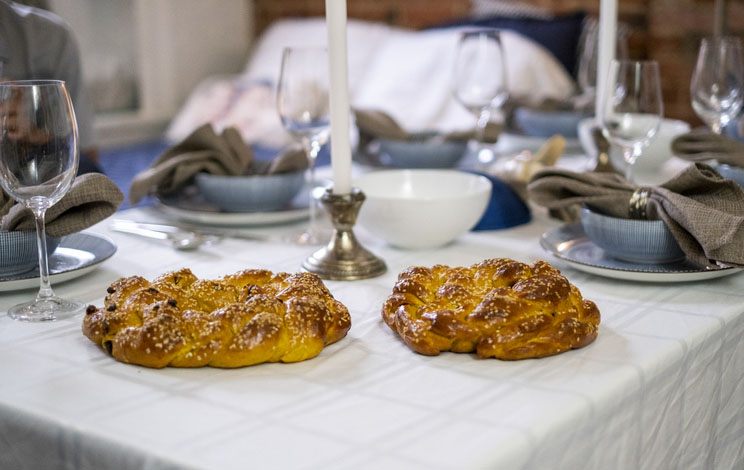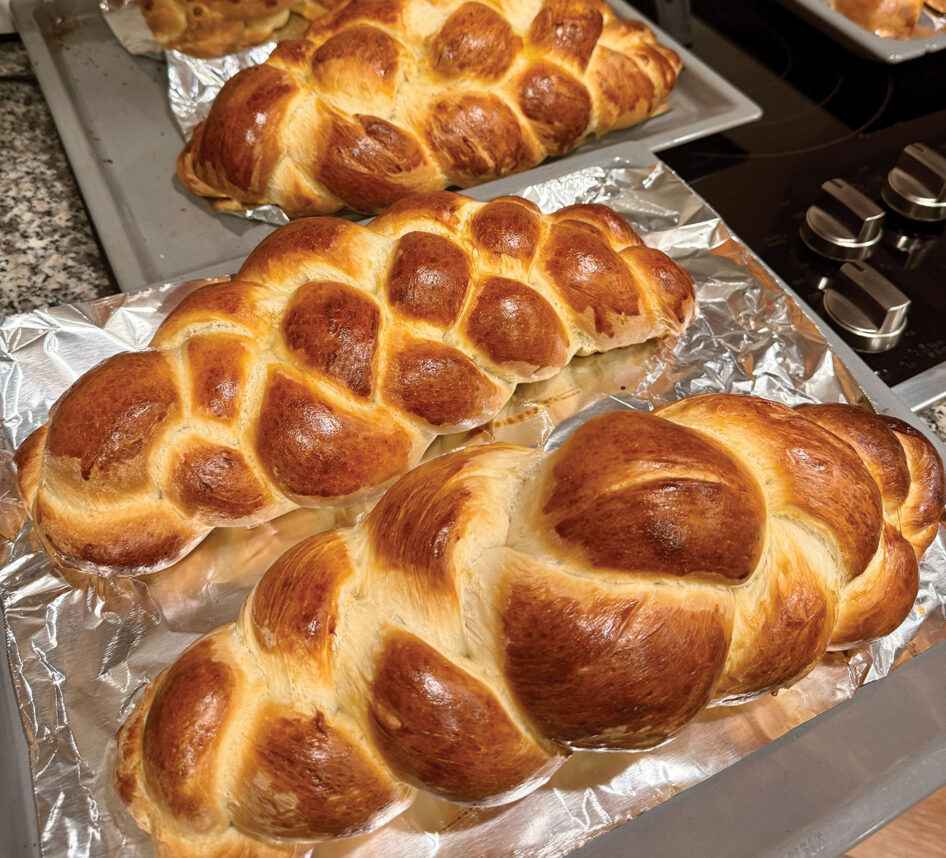
If you haven’t shopped in one of the many Costco-sized Asian supermarkets, then you’re missing the ultimate inspirational grocery shopping expeditions. H mart, Lotte and the largest, 99 Ranch Market, have sprung up all over the United States in response to a significant increase in the Asian American population (up to 6% of the total population according to the U.S. Census Bureau) and their hunger for a taste of home.
I’ve shopped at Asian markets for most of my life and it’s the only type of store my father doesn’t complain (too much) about entering. He goes for the superior exotic fruit, such as the fresh lychee and loquat (a fruit he remembers from his childhood, called shesek in Israel), crisp Asian pears and aromatic custard apples. Also, we lure my father in with promises of fresh dumplings and hand-pulled noodles, always on offer in the food stalls inside.
Browsing in one of these superstores can be overwhelming, especially to someone who can’t read the Korean, Chinese or Japanese writing on jars and plastic bags of mysterious foods. But if you have time, shopping there holds the promise of discovery for the curious cook.
These markets are most often my last stop to stock up before I return to Uganda, where it’s difficult to find some of the ingredients for the specials I like to prepare at my café. I usually return with a full suitcase of exotics; Gochujang paste, mirin and sake for teriyaki, dried chilies and mushrooms, tetra packs of silken tofu, black vinegar, inky Thai mushroom sauce, preserved daikon radish, and tamari for my gluten-free customers. I also treat myself to packets of roasted seaweed and rice paper for making summer rolls, and heaps of unusual Asian snacks and rice crackers. But a clear standout in one of the many discoveries I’ve made for my perpetual experimental food lab is shirataki noodles.
Shirataki, a native Japanese food, is made from the gelatinous, fibrous root of a vegetable called konjac, also known as devil’s tongue or elephant yam. In Japan, noodles and blocks sold in tubular bags called konnyaku are fried with vegetables, cooked in a hot pot with meat or cut into slices and eaten uncooked, dipped into soy sauce as a filling vegan sashimi. Since they consist of 97% water and 3% fiber extract also known as glucomannan, they are almost completely calorie and carbohydrate free and have been used medicinally in Japan for the past 1,500 years. The rubbery, flavorless gel-like substance is a great diet food because it contains no sugar, fat or protein and is so high in fiber that it fills you up while cleaning out your small intestine.
If a tasteless, Jell-O-like blob doesn’t sound appetizing, wait until you realize the potential for making delicious Asian noodle dishes with a fraction of the calories. You may have already tried konjac noodles, commonly sold under the names miracle noodles, shirataki and my favorite, tofu shirataki, and been turned off by the “fishy” smell that emanates from the bag when you opened it (the odor comes from the water the noodles are stored in that absorbs the smell of the konjac root). But once rinsed in fresh, cold water for a minute or two, the smell vanishes and leaves no distinguishing taste.
Also, in my experience, the cooking instructions on the bags aren’t optimal. I’ve found that rather than boiling the noodles in water before cooking, as suggested, the noodles are best prepared by skipping the boiling step entirely. Simply rinse the noodles in a strainer, dry them in a clean kitchen towel and then dry roast them in a nonstick pan for a few minutes until all the water has evaporated and they make a slight squeaking sound when they’re pushed around in the pan. Then remove them from the pan, stir fry the protein, vegetables or sauce of your choice before adding back the noodles to the pan where, much like tofu, they will absorb the flavor of anything they are cooked with.
One caveat: While some don’t mind the rubber band-like texture of shirataki noodles when cooked in an Italian preparation with tomato or cream sauce, I find it unpalatable. Like rice or glass noodles, Asian preparations tend to be just the right foil for the slightly rubbery, chewy texture of these noodles, and I’ve used them as replacements in pad thai and dan-dan noodles for many friends who didn’t notice the difference until I told them. Try them with a quick peanut sauce, in any stir fry like a lo mein, a Vietnamese pho or even to replace noodles in chicken soup — for almost zero calories.
Sound too good to be true? Here is a recipe for Shirataki Noodle Pad Thai. When I sent a sample of it to my vegetarian friend and her husband, they liked it so much they devoured it while standing in their kitchen without even heating it up. I like this version with pressed tofu but feel free to use any protein or even to leave it out. Thanks to the magic of konjac noodles, you get all the flavor and goodness of a real pad thai in under 400 calories per serving, less than half of the traditional version made with starchy rice noodles — and that’s something to celebrate.
SHIRATAKI NOODLE PAD THAI
Sauce:
3 packed tablespoons chopped palm sugar (or brown sugar)
1/4 cup tamarind concentrate
2 tablespoons fish sauce (Red Boat brand is kosher; replace with soy
sauce if vegetarian)
3 tablespoons water
Noodles:
1 packet tofu shirataki “fettuccine” (or spaghetti)
3 tablespoons neutral-tasting cooking oil, divided
1 small red onion, thinly sliced
2 cloves garlic, minced
1/4 cup preserved daikon radish, chopped (optional)
1 piece pressed firm tofu (optional), cut into ½ inch pieces
1/2 tsp chili flakes (optional)
2 eggs
2 cups bean sprouts, divided
1/2 cup garlic chives or scallions, cut into 1-inch pieces
1/4 cup roasted peanuts, chopped
1 lime, cut on the bias for serving
Prepare sauce by mixing together softened palm sugar (or brown sugar), tamarind, fish sauce and water. Set aside.
Prepare shirataki noodles by rinsing thoroughly in cold water. Strain and dry in a clean kitchen towel.
Heat a nonstick pan or wok and cook the noodles (no oil) until they squeak slightly and are completely dry. Set aside.
Add 2 tablespoons of oil to the same hot pan and add onion, garlic, preserved radish, tofu and chile flakes, if using. Cook two minutes or until the garlic becomes aromatic.
Add back the noodles and sauce into the pan with the vegetables and cook until the sauce thickens and is absorbed.
Push the noodle mixture to one side and add remaining tablespoon of oil to the other side of the pan. Crack in two eggs and scramble gently until set before stirring into the noodle mixture.
Add 1 1/2 cups of the bean sprouts and most of the garlic chives into the pan, stir and turn off heat.
Serve with remaining fresh bean sprouts and chives and garnish with chopped peanuts and lime. Squeeze plenty of lime juice on top for optimal flavor.
Serves 2.
Yamit Behar Wood, an Israeli-American food and travel writer, is the executive chef at the U.S. Embassy in Kampala, Uganda, and founder of the New York Kitchen Catering Co.

































